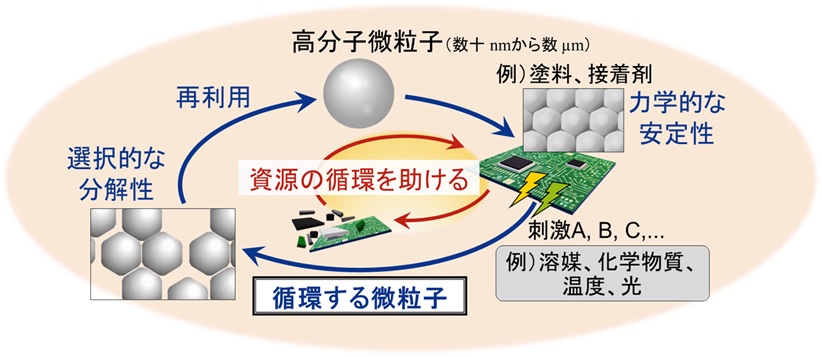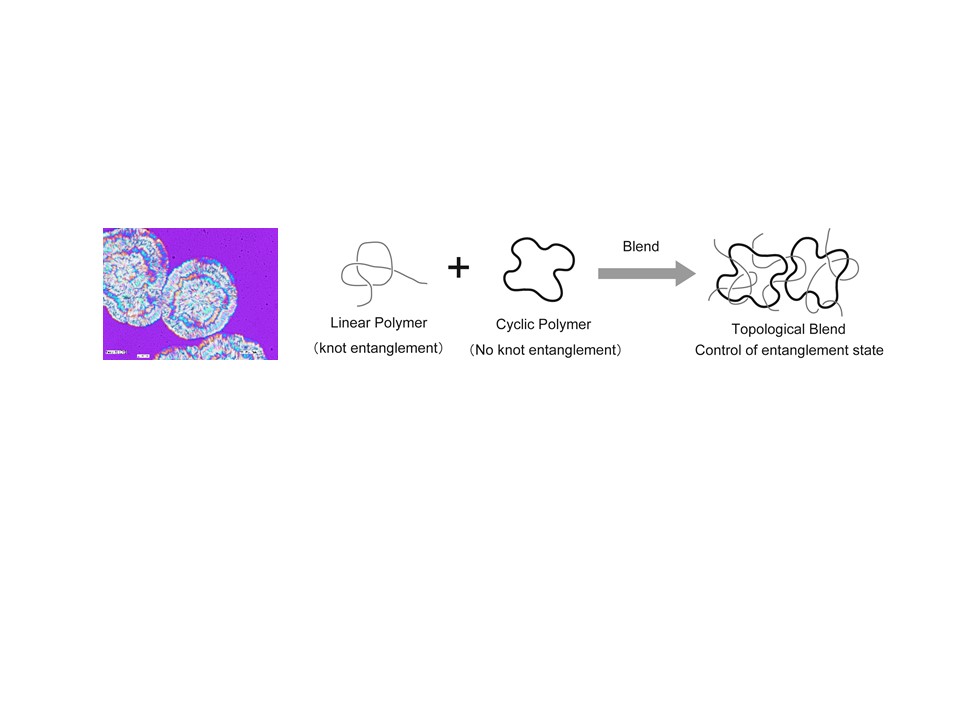Environmental Polymer Chemistry

Polymer particles, ranging from tens of nanometers to several micrometers, have long been used in paints and adhesives. In addition, such polymer particles are applied in a wide range of fields, including medicine, telecommunications, cosmetics, environmental science, and electronics, emerging as key materials for future technologies. Our lab focuses on enhancing the functionality of polymer particles and developing recycling methods for materials made from polymer particles. Our research addresses critical societal challenges such as increasing polymer waste, resource depletion, and environmental pollution.
 |
|
|---|
Our research laboratory is developing environmentally responsive hydrogel microparticles composed of polymers and water. These smart materials can change their properties in response to external conditions, encapsulating functional molecules and releasing them at the appropriate time. Using our unique synthesis and measurement techniques, we aim to understand and control these unprecedented microparticles. Recently, we have also leveraged the excellent film-forming properties of elastomer microparticles, utilizing molecular machines to create strong, sustainable films. These innovations have potential applications in pharmaceuticals and cosmetics, contributing to the evolution of next-generation polymer microparticles and addressing resource depletion and environmental issues.
 |
|
|---|
This study conducts the development of high-performance biodegradable polymers with the tunability of physical properties such as mechanical strength and thermal resistance using the unique topology of cyclic homopolymer and topological blend polymer having cyclic polymer as a component. The cyclic homopolymer and topological blend polymer can control crystalline and entanglement states. The unique morphology and crystallization behavior have been clarified.
 |
|
|---|
Aromatic polymers are used in various industrial fields as high-performance materials due to their excellent properties, such as thermal stability, mechanical properties, and chemical stability. However, the processing of these polymers is complicated because of their intractability. We have studied the unique polymerization system for morphology control of aromatic polymers. As a result, we obtained various morphologies such as whisker, ribbon, helical, sphere with dimple, and so on. This polymerization system and materials are one of the answers to the sustainable development of society.

